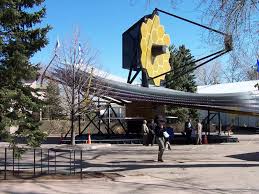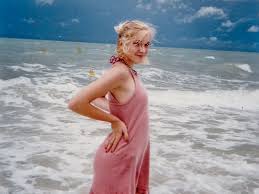The world’s largest and most powerful space telescope launched a high-stakes mission on Saturday, to see light from the first stars and galaxies and search the universe for signs of life.
The James Webb Space Telescope was launched into the Christmas morning sky by a European Ariane rocket from French Guiana on South America’s northeastern coast.
The $10 billion observatory hurtled toward its goal 1 million miles (1.6 million kilometers) distant, more than four times the distance between the earth and the moon. It’ll take a month to get there, then another five months for its infrared eyes to be ready to scan the cosmos.
The large mirror and sunshield of the telescope must first unroll; they were folded origami-style to fit into the rocket’s nose cone. Otherwise, the observatory will be unable to peek back in time 13.7 billion years, only 100 million years after the universe-forming Big Bang, as planned.
Webb, according to NASA Administrator Bill Nelson, will provide “a deeper knowledge of our cosmos and our place in it: who we are, what we are, and the everlasting search.”
“We’re going to uncover fantastic things that we never dreamed,” Nelson said after the launch from the Kennedy Space Center in Florida. “There are still uncountable things that have to work and they have to operate flawlessly,” he added. “We recognize that with great reward comes great danger.”
The long-delayed James Webb Space Telescope is named after NASA’s administrator during the 1960s and is intended to replace the aging Hubble Space Telescope. The new 7-ton telescope was built and launched in collaboration with NASA, the European Space Agency, and the Canadian Space Agency, with thousands of workers from 29 nations working on it during the 1990s.
There were fewer viewers at the French Guiana launch site than planned due to the launch falling on Christmas Day and a worldwide increase in COVID-19 cases. Nelson, along with a congressional delegation and many of the telescope’s contractors, bowed out.
Astronomers all over the world have been waiting for Webb to take flight after years of difficulties. Due to last-minute technical issues, the launch was delayed by over a week, and then it was postponed until Christmas due to strong winds. In honor of the occasion, a handful of the launch controllers donned Santa hats.
“We have given humanity a Christmas present today,” stated Josef Aschbacher, director-general of the European Space Agency. It was a memorable occasion for him, but he added, “It’s quite nerve-racking.” I couldn’t do launches on a daily basis. This would have a negative impact on my life expectancy.”
Following Webb’s successful launch, cheers and applause erupted inside and outside Launch Control, with ecstatic scientists embracing one another amid shouts of “Go Webb!” and signs reading “Bon Voyage Webb.” Before it rocketed away, cameras on the rocket’s top stage caught one final view of the dazzling telescope.
The highlight of the telescope is a gold-plated mirror that spans more than 21 feet (6.5 meters).
A wispy, five-layered sunshield shields the observatory, which is necessary to keep the light-gathering mirror and heat-sensing infrared detectors at subzero temperatures. It’s the size of a tennis court, measuring 70 feet by 46 feet (21 meters by 14 meters).
The sunshield will be opened three days after liftoff if all goes well, and it will take at least five days to unfold and lock into position. After then, about 12 days into the flight, the mirror segments should open up like the leaves of a drop-leaf table.
In order for the telescope to succeed, hundreds of release mechanisms must all work flawlessly. NASA program director Greg Robinson described the project as “unique.”
Steven Hawley, a retired astronaut, and astronomer, is more concerned about Webb than he was about Hubble, which he sent into orbit from the space shuttle Discovery in 1990. That’s because Webb will be too far away to be rescued, as was the case when Hubble’s vision became fuzzy due to a faulty mirror.
Hubble has been a treasured marvel that has revolutionized humanity’s understanding of the universe, casting its eyes as far back as 13.4 billion years, thanks to spacewalking repairs by astronauts. Webb’s infrared eyesight is keener and more far-reaching than Hubble’s in the shorter visible and ultraviolet wavelengths, so it’s up to him to get even closer to the Big Bang 13.8 billion years ago.
Webb will have a 10-year operational life, according to NASA. Engineers purposefully left the fuel tank open so that visiting spacecraft may fill it up if and when that technology becomes available.
“I never would have expected that it would still be running strong over 32 years later,” Hawley, now an emeritus professor at the University of Kansas, said in an email. “I’m hoping that in 32 years, we’ll be able to say the same thing about JWST.”

















